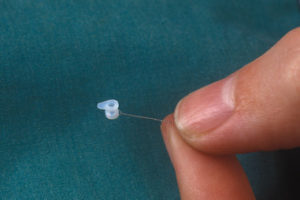Signs and Symptoms of Glue Ear
It is a common condition in children where the middle ear becomes filled with fluid. While generally not painful, this can lead to hearing problems, and in some cases developmental problems due to impaired hearing.
As many as one in 5 children around 18-24 months will be affected by glue ear, and roughly 8 in 10 children will have had it at least once by the age of 10. Usually, treatment is not required for Glue Ear, as symptoms subside on their own within 3 months. However, if symptoms persist longer than this, it may be worthwhile consulting your GP.

Common Symptoms
- Hearing loss
- Inability to follow conversations
- Unusually tired or irritable
- Problems with learning and social skills
- Regularly turning up the volume on devices
- Ear pain / Ear pulling.
Effects in adults
Glue Ear can also become present in adults. Generally adults complain of decreased hearing, ear blockage or pressure. Signs and treatment for adults are similar as for children. This usually involves inserting a Grommet into the middle ear if symptoms do not subside within three months. However, importantly it also involves a careful assessment of the area at the back of the nose where the eustachian tube which drains the middle ear space, enters into the nasal cavity. This is because, unlike in children, especially single-sided glue ear, is unusual in adults, and a thorough search for an underlying lesion/cause at the back of the nose, such as residual adenoid tissue or a tumour must be conducted.
Treatment (Grommets)
At Melbourne ENT, we offer several potential treatments. The most common treatments include Grommets or Adenoidectomy. We also work with independent providers of hearing aids in cases where this is a more appropriate treatment.
Read more information about hearing aid:
General tips and information on the use, care and optimisation of your hearing aids…
Hearing Aid User Family & Friends
General tips and information for family, friends and carers of patients with hearing aids…
Hearing Loss Strategies for Children
General tips and information for family of children with hearing loss…
Home Hearing Assistance Devices
General tips and information for Home Hearing Assistance Devices…
Grommets:

Grommets are small tubes that are inserted into the eardrum under general anaesthetic, and sometimes, under a local anaesthetic (especially in adults). By allowing air to pass through the eardrum, they are able to keep the air pressure on both sides of the ear drum equal, and allow fluid to drain from the middle ear. Grommets usually stay in place between 6-12 months and then fall out on their own. This process is painless for the patient, and in almost all cases, the ear drum heals up without a hole.
For more information, see our grommet surgery page, learn more about grommet insertion, and view our video on Grommets.
Adenoidectomy:
An Adenoidectomy is a surgical procedure to remove the Adenoids, which are small, soft collections of immune tissue at the back of the nose.
Swollen or enlarged Adenoids can sometimes block the Eustachian tube in the middle ear. By removing these, the Eustachian tube can function more effectively and allow fluid to drain from the middle ear.
For more information, visit our page on Adenoidectomy.
Hearing aids:
A hearing aid is usually considered as an alternative to the above surgical treatments in cases where the child is unwilling or unable to undergo surgery.
Hearing aids come in different shapes and sizes and can also be discreet. They work by amplifying the sound entering the microphone in the ear, enabling the wearer to hear more effectively.
For more information, please see our page on hearing aids.
Concerns or questions?
Contact one of our ENT Specialists:
- Phone: 1300- 952-808
- Email: admin@melbentgroup.com.au